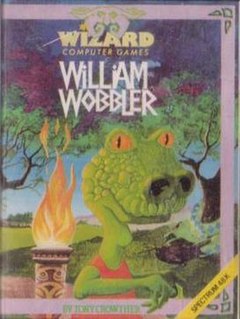This article needs additional citations for verification .(January 2020) |
| William Wobbler | |
|---|---|
 Cover art | |
| Developer(s) | Antony Crowther |
| Publisher(s) | Wizard Development |
| Designer(s) | Antony Crowther |
| Platform(s) | Commodore 64, ZX Spectrum |
| Release | |
| Genre(s) | Adventure |
| Mode(s) | Single-player |
William Wobbler is a video game developed by Antony Crowther and released by Wizard Development in 1985 for the Commodore 64 and ZX Spectrum.
